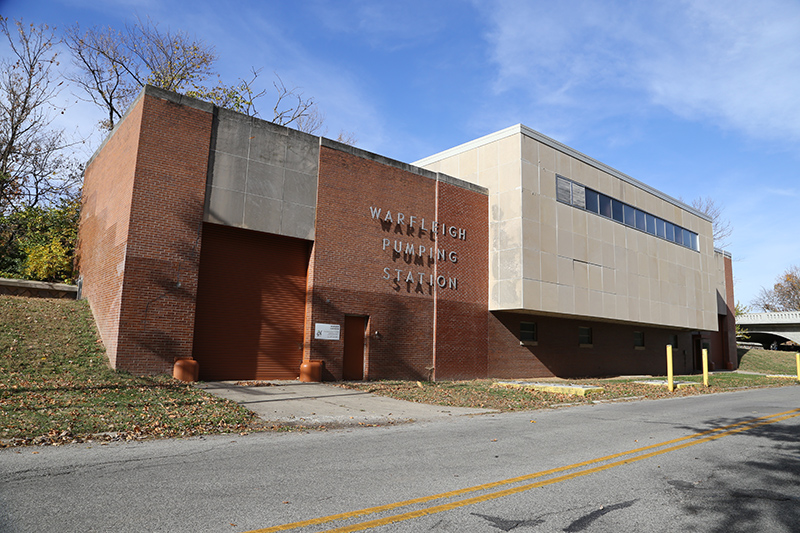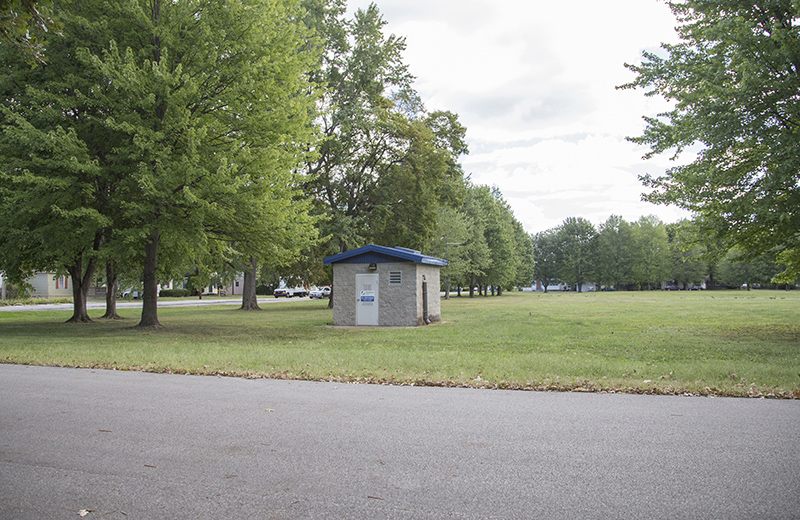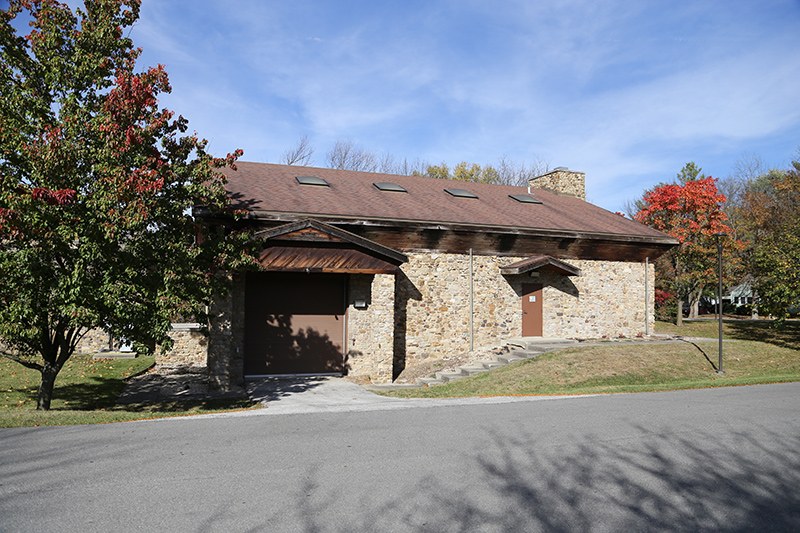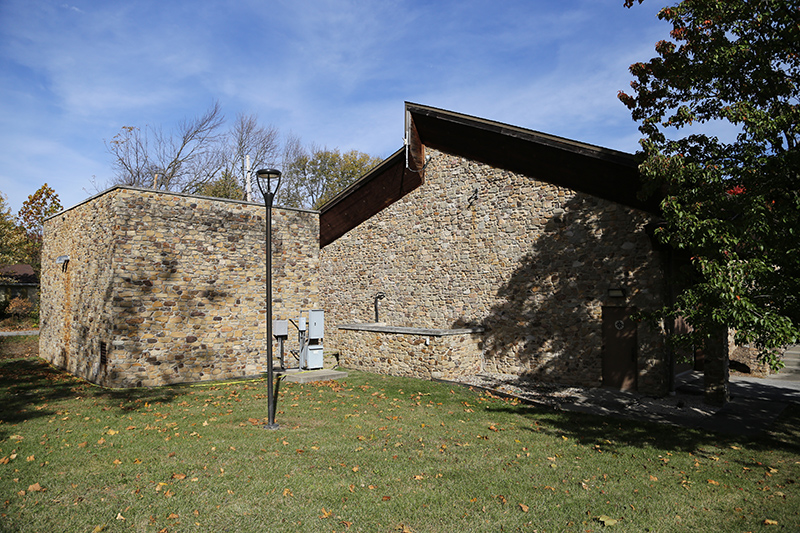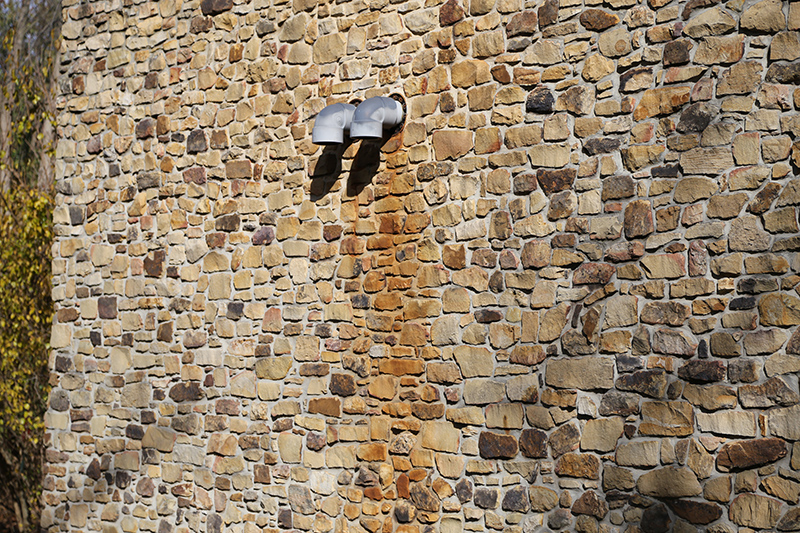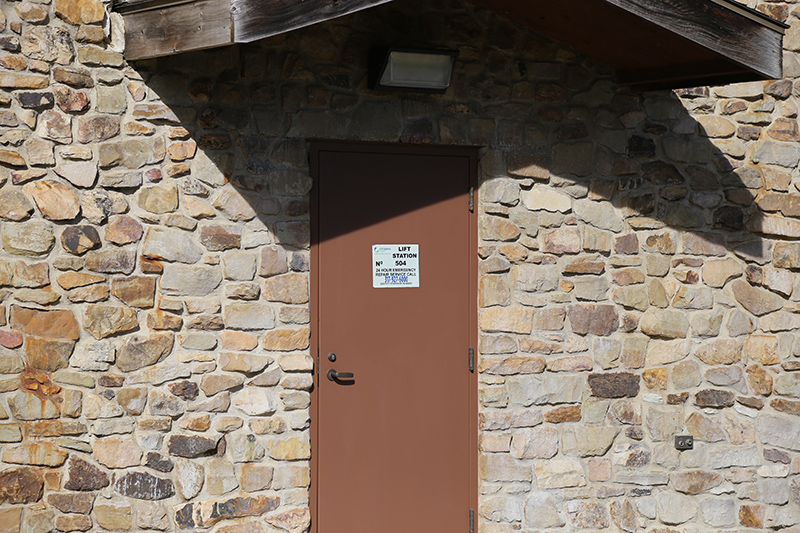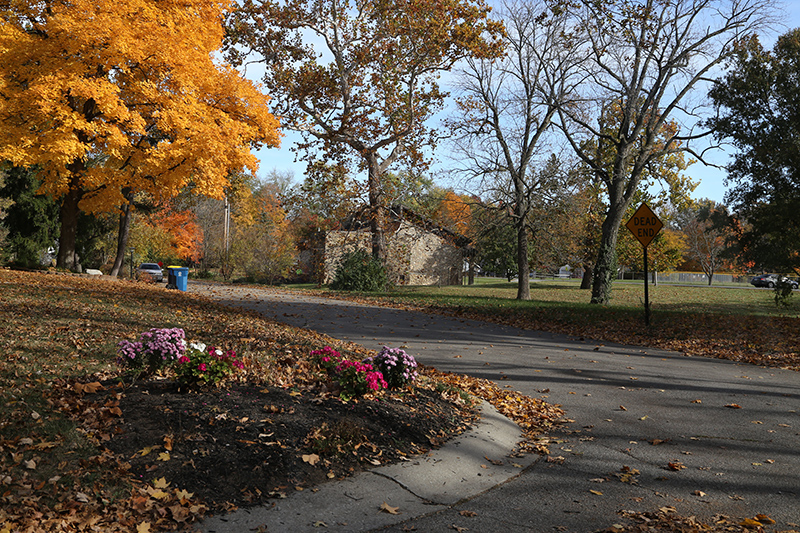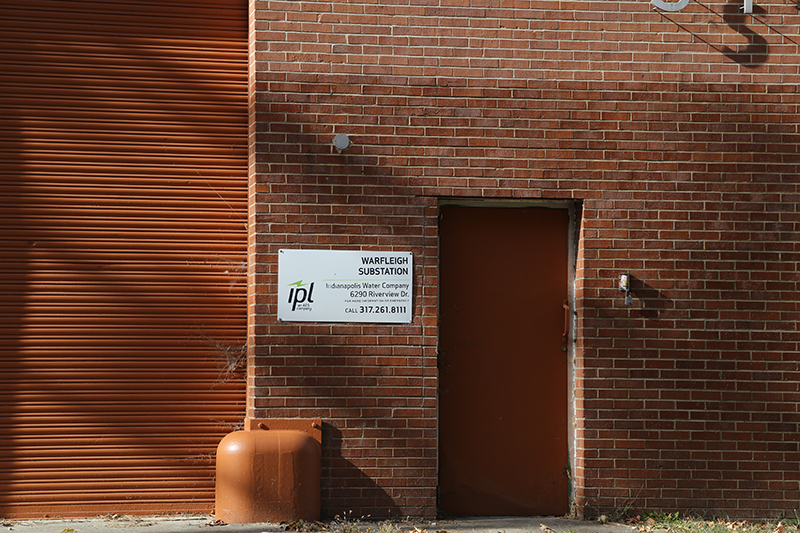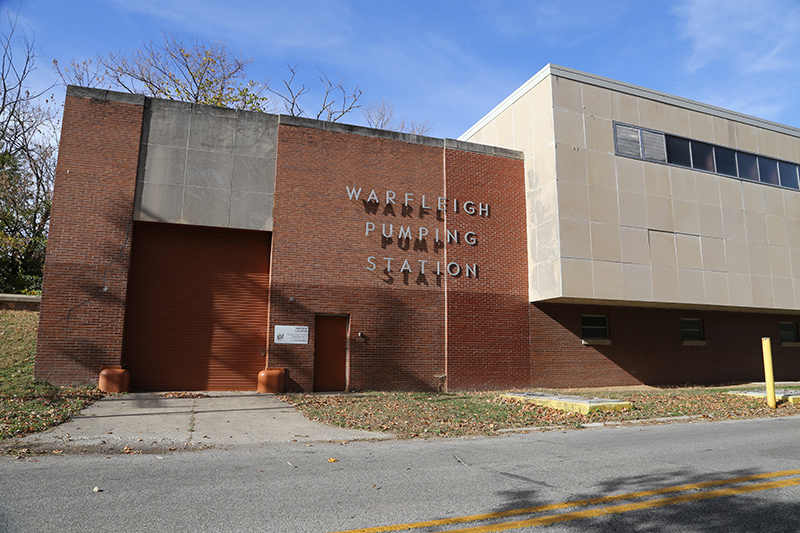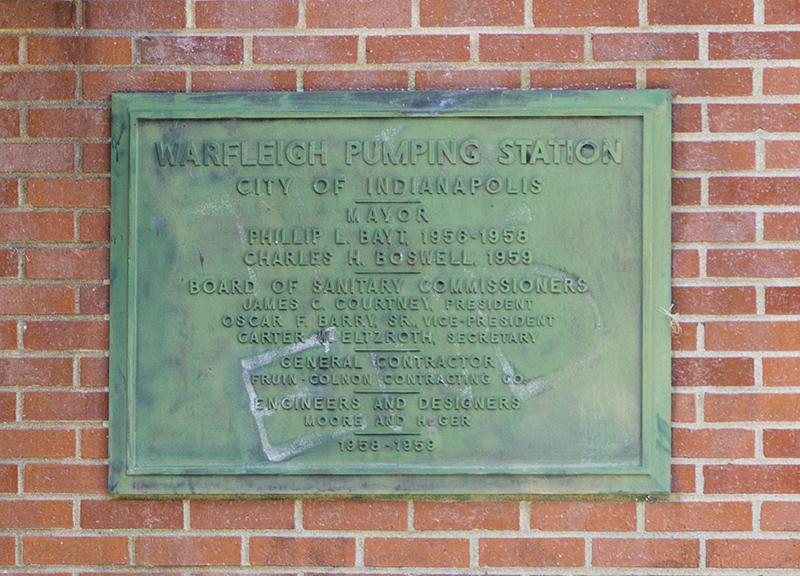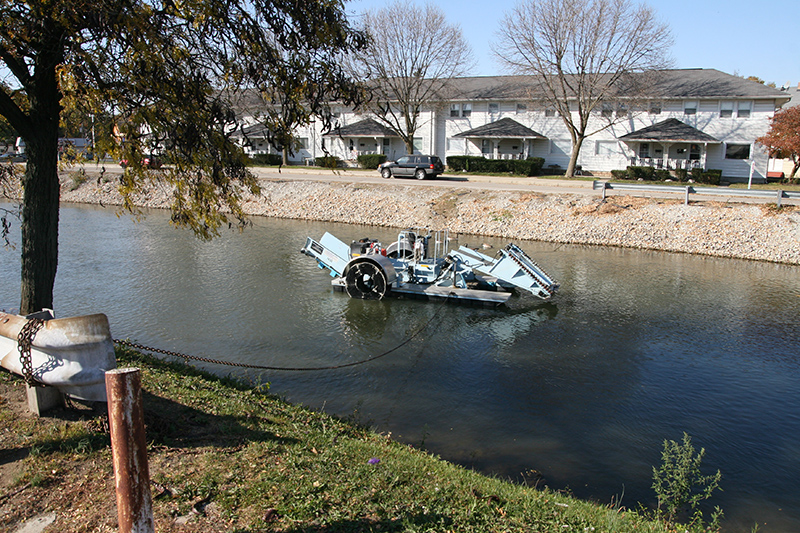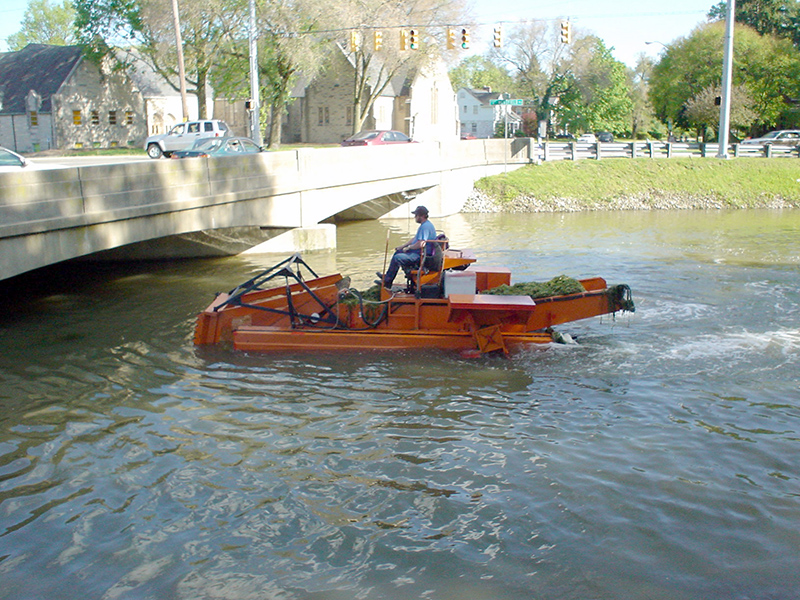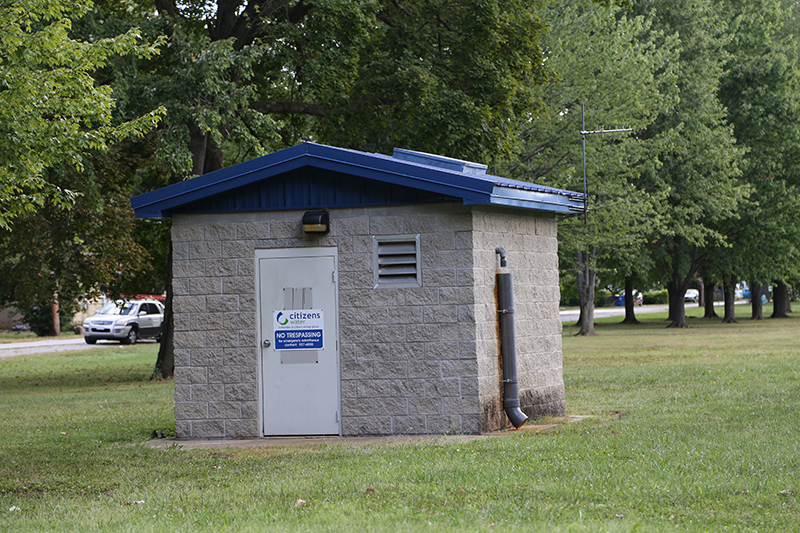
|
Broad Ripple Random Ripplings

The news from Broad Ripple
Brought to you by The Broad Ripple Gazette
(Delivering the news since 2004, every two weeks)

|
| Brought to you by: |

|

|

|

|

|

|
Converted from paper version of the Broad Ripple Gazette (v12n22)
Everything you always wanted to know about the canal...Part Five
posted: Oct. 30, 2015
Continuing on with buildings that readers have asked about, we moved to back north in our talks. We started at Broad Ripple Park. I asked about the brick building at the north east corner of the park on Evanston.
"That brick building is a lift station," explained Ed Malone, Director of Water Production for Citizens. "It actually goes three or four levels down into the ground, it is a sewage lift station. And, it pumps sanitary sewage from the north east side of Indianapolis through a force main that basically comes down...kind of follows the Monon, to a large part, and comes down and dumps into the main sewer further downstream. It primarily picks up the sanitary sewage that is outside of the combined sewer district and pushes it into the main sewer system."
"You'll notice it has chemical feed on the backside. You've probably seen the red stains, if you looked on the back of the building. And that's because we feed iron, basically, ferric, at that location to minimize odors. That is why it doesn't smell like a lift station. We keep the odors down by feeding ferrous material there."
Iron stains on rear of building from addition of ferrous to waste
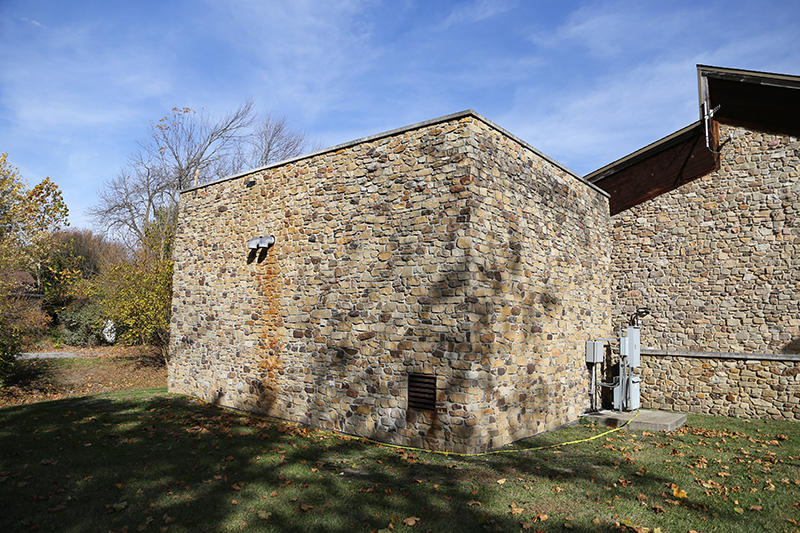
I asked, "Is that what the Warfleigh building is also?"
"No," Ed responded, "Warfleigh. . . when you are going over the Meridian Street bridge over White River, if you look directly downstream, you'll see a large pump station directly at the Meridian Street overpass, that is the Warfleigh Pump Station. Now, that is a storm water pumping station. We, through our United Water contract, oversee that still, but, that is a storm water pumping station, that is not sanitary pumping station. It is very large."
Followers of this canal series will remember that Ed explained earlier that if it is part of the sanitary system (water on the way to the treatment facility, clean water and sanitary sewers), then it falls under Citizens. If it is storm water then is falls under the City of Indianapolis. This one in Warfleigh is more complicated. United manages the Warfleigh Storm Water Pump Station for the City of Indianapolis, but Citizens oversees United's operation.
Ed added, "That was created back after the floods in late 50s. You don't want to be sitting on the outfall of that thing (in White River) when we start pumping out of it. You'll end up a fairly good distance downstream."
Then I asked about the building south of Broad Ripple at Arsenal Park. It is at the corner of 49th and Haverford Avenue.
"There's a little water company building at Arsenal Park. A crane comes up occasionally, and then the crane tips itself up and does something to this building, and the roof comes off," I said.
Edwin Morris, Operations and Maintenance Supervisor for Citizens, answered, "That's a well for the Fall Creek Water Treatment Plant. They supplement Fall Creek water, which is processed there. What you see with the crane. . . they come in to rehab the wells once every three years. They come in and clean the wells out. That's why you see the crane out there removing the well head to do work...maintenance on the well."
"There are two wells there," added Ed Malone. "And in Marcy Village, directly to the south of that, there are wells in there also. There are three wells in Marcy Village. Then there are additional wells around the Fall Creek treatment plant in addition to those."
"Very complicated," I replied. I had no idea that the water company had ground wells around the city to get more fresh water! "So the rest of the water [for the treatment plant] comes out of Fall Creek?"
Yes, the majority of the water for Fall Creek [treatment plant] comes out of the [Fall] creek, but we use wells to supplement. Same here [at White River Treatment Plant], we have wells to supplement the flow with this facility. We have wells around this facility and around Riverside Station that pump to here, that we treat at this facility. So, even though we say there are surface water plants, they do have some ground water there," responded Ed.
I was further confused at this point because I had never thought about surface water and ground water as being different things. I soon realized that to the water company they are very different. Ground water isn't on the ground, it is underground, in wells. Surface water is from creeks, streams, rivers and canals.
This concluded the questions I had about various building seen around town. I moved the questioning back to the canal flow and its banks.
In part 3 of this canal series I discussed the Eurasian milfoil weed that clogs the canal. I didn't properly explain the harvesting. For many years the water company used weed harvester boats. These boats cut the weed and hauled it away. In 2013 they switched to dredging. I didn't think that was possible without damaging the original 1836 clay lining of the canal bed.
One of the weed harvesting boats used by Citizens in the canal to keep the flow high.
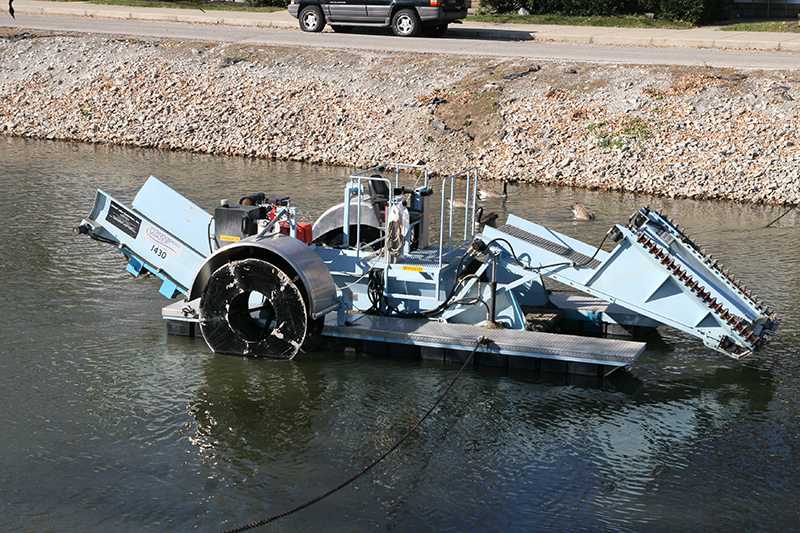
"I had been told that the bed of the canal is clay. Or was originally clay," I commented.
"It still is," Ed responded.
"And that's why it couldn't be dredged, because it would be damaged. It seems like they're dredging now," I added.
"We're dredging," said Ed. "We're not going through the clay layer. What we're doing is removing the sediment that's accumulated on top of the clay layer. So basically we're taking the canal down to its original cross sections."
End of Part Five
alan@broadripplegazette.com

|

|

|
| Brought to you by: |

|

|

|
| Brought to you by: |

|

|

|


